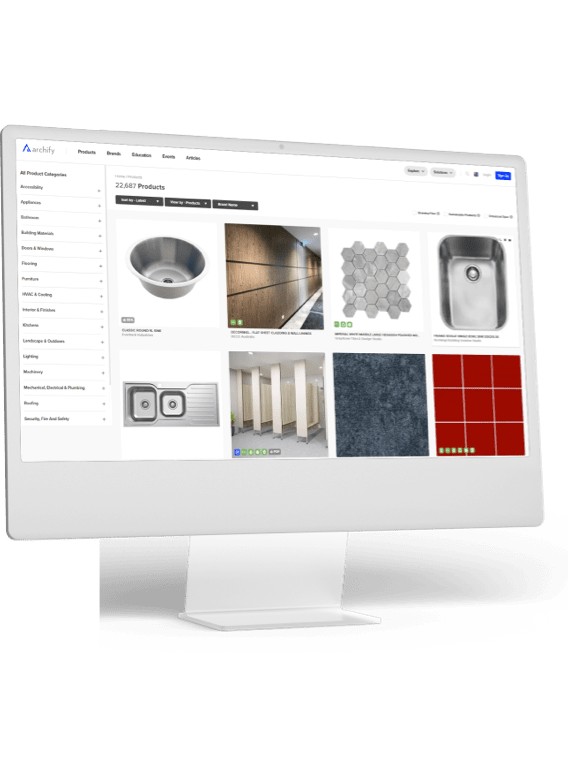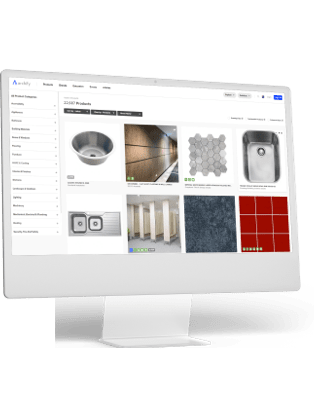QUICSEAL 680
QUICSEAL 680 TILEFLEX SUPER is a two-part highly flexible adhesive for bonding stone and tiles in a variety of applications.
The product is blended from a special selection of acrylic latex blended with high quality fillers and aggregates to obtain bonding mortars with extremely high flexibility and adhesion strength. QUICSEAL 680 mortar provides excellent adhesion to most surfaces and hardens without noticeable shrinkage.
Once cured, QUICSEAL 680 mortar is resistant to water and mild chemicals and durable to shocks, impact, extreme flexing, vibrations and temperature changes.
Advantages:
- Latex-fortified mortar – enhanced durability
- Enhanced performance – high strength and durable
- Extended open time – ease of workability and installation
- Slip resistance – important for vertical installations
- High deformability – improved flexibility
Uses
QUICSEAL 680 is suitable for bonding ceramic tiles, quarry tiles, klinker, mosaics, natural stones, glass mosaics etc.:
- for both wall and floor installations; internal and external areas;
- on conventional cement-sand screeds and renders.
- in swimming pools and jacuzzis, fountains, ponds and water tanks;
- on external facades such as balconies and terraces;
- on areas subjected to chemical contact such as dairies, breweries, food and chemical industries;
- for tile-on-tile installations;
- for areas subjected to heavy traffic such as walkways and pavements;
- on highly flexible substrates such plywood, gypsum boards, cement-boards, etc.;
Limitations
Do not use QUICSEAL 680 tile adhesive to bond moisture sensitive stones. Use QUICSEAL fast-set or epoxy range of tile adhesive.
Substrate Preparation
Substrates must be level, solid and stable. All loose particles, oil, grease, paint, wax or any substance that may inhibit adhesion must be removed.
Extremely porous and powdery substrates (e.g. gypsum or prefabricated panels, etc.) should be treated with QUICSEAL 113 PRIMER C before laying tiles with QUICSEAL 680 adhesive.
It is advisable to allow screeds and renders to cure for at least 7 days and surfaces which have become heated from exposure from direct sunlight should be dampened with water to prevent premature curing.
Preparing the mix
Pour 1 part of QUICSEAL 680 Part A into a clean container and slowly add 4 parts QUICSEAL 680 by weight and stir with a low speed mechanical mixer until a homogeneous lump free paste is obtained. Leave to rest for 5 minutes and re-stir before use.
Application
To achieve good adhesion, firstly apply a thin coat of QUICSEAL 680 paste onto the substrate by using the straight edge of the trowel followed immediately with the appropriate amount of adhesive to achieve the required thickness. The correct notched trowel size to use will depend on the type and size of the tiles
.
For large sized tiles and tiles with lugs and grooves, apply a coat of QUICSEAL 680 adhesive to the back of the tiles. Lay the tiles onto the adhesive and ensure that a firm pressure is applied to achieve good contact with the adhesive.
Unfavourable climatic conditions such as strong sunlight, wind and high temperature, etc. and very porous substrates may reduce the open time of the adhesive. Hence, careful checks have to be made to ensure that skinning does not occur on the surface of the adhesive before laying the tiles. If a skinning has occurred, rework the adhesive before laying the tiles.
The tiles must be adjusted within 30 minutes after laying and must be protected from rain or strong sun for at least 24 hours.
QUICSEAL 680
QUICSEAL 680 TILEFLEX SUPER is a two-part highly flexible adhesive for bonding stone and tiles in a variety of applications.
The product is blended from a special selection of acrylic latex blended with high quality fillers and aggregates to obtain bonding mortars with extremely high flexibility and adhesion strength. QUICSEAL 680 mortar provides excellent adhesion to most surfaces and hardens without noticeable shrinkage.
Once cured, QUICSEAL 680 mortar is resistant to water and mild chemicals and durable to shocks, impact, extreme flexing, vibrations and temperature changes.
Advantages:
- Latex-fortified mortar – enhanced durability
- Enhanced performance – high strength and durable
- Extended open time – ease of workability and installation
- Slip resistance – important for vertical installations
- High deformability – improved flexibility
Uses
QUICSEAL 680 is suitable for bonding ceramic tiles, quarry tiles, klinker, mosaics, natural stones, glass mosaics etc.:
- for both wall and floor installations; internal and external areas;
- on conventional cement-sand screeds and renders.
- in swimming pools and jacuzzis, fountains, ponds and water tanks;
- on external facades such as balconies and terraces;
- on areas subjected to chemical contact such as dairies, breweries, food and chemical industries;
- for tile-on-tile installations;
- for areas subjected to heavy traffic such as walkways and pavements;
- on highly flexible substrates such plywood, gypsum boards, cement-boards, etc.;
Limitations
Do not use QUICSEAL 680 tile adhesive to bond moisture sensitive stones. Use QUICSEAL fast-set or epoxy range of tile adhesive.
Substrate Preparation
Substrates must be level, solid and stable. All loose particles, oil, grease, paint, wax or any substance that may inhibit adhesion must be removed.
Extremely porous and powdery substrates (e.g. gypsum or prefabricated panels, etc.) should be treated with QUICSEAL 113 PRIMER C before laying tiles with QUICSEAL 680 adhesive.
It is advisable to allow screeds and renders to cure for at least 7 days and surfaces which have become heated from exposure from direct sunlight should be dampened with water to prevent premature curing.
Preparing the mix
Pour 1 part of QUICSEAL 680 Part A into a clean container and slowly add 4 parts QUICSEAL 680 by weight and stir with a low speed mechanical mixer until a homogeneous lump free paste is obtained. Leave to rest for 5 minutes and re-stir before use.
Application
To achieve good adhesion, firstly apply a thin coat of QUICSEAL 680 paste onto the substrate by using the straight edge of the trowel followed immediately with the appropriate amount of adhesive to achieve the required thickness. The correct notched trowel size to use will depend on the type and size of the tiles
.
For large sized tiles and tiles with lugs and grooves, apply a coat of QUICSEAL 680 adhesive to the back of the tiles. Lay the tiles onto the adhesive and ensure that a firm pressure is applied to achieve good contact with the adhesive.
Unfavourable climatic conditions such as strong sunlight, wind and high temperature, etc. and very porous substrates may reduce the open time of the adhesive. Hence, careful checks have to be made to ensure that skinning does not occur on the surface of the adhesive before laying the tiles. If a skinning has occurred, rework the adhesive before laying the tiles.
The tiles must be adjusted within 30 minutes after laying and must be protected from rain or strong sun for at least 24 hours.
QUICSEAL 680
QUICSEAL 680 TILEFLEX SUPER is a two-part highly flexible adhesive for bonding stone and tiles in a variety of applications.
The product is blended from a special selection of acrylic latex blended with high quality fillers and aggregates to obtain bonding mortars with extremely high flexibility and adhesion strength. QUICSEAL 680 mortar provides excellent adhesion to most surfaces and hardens without noticeable shrinkage.
Once cured, QUICSEAL 680 mortar is resistant to water and mild chemicals and durable to shocks, impact, extreme flexing, vibrations and temperature changes.
Advantages:
- Latex-fortified mortar – enhanced durability
- Enhanced performance – high strength and durable
- Extended open time – ease of workability and installation
- Slip resistance – important for vertical installations
- High deformability – improved flexibility
Uses
QUICSEAL 680 is suitable for bonding ceramic tiles, quarry tiles, klinker, mosaics, natural stones, glass mosaics etc.:
- for both wall and floor installations; internal and external areas;
- on conventional cement-sand screeds and renders.
- in swimming pools and jacuzzis, fountains, ponds and water tanks;
- on external facades such as balconies and terraces;
- on areas subjected to chemical contact such as dairies, breweries, food and chemical industries;
- for tile-on-tile installations;
- for areas subjected to heavy traffic such as walkways and pavements;
- on highly flexible substrates such plywood, gypsum boards, cement-boards, etc.;
Limitations
Do not use QUICSEAL 680 tile adhesive to bond moisture sensitive stones. Use QUICSEAL fast-set or epoxy range of tile adhesive.
Substrate Preparation
Substrates must be level, solid and stable. All loose particles, oil, grease, paint, wax or any substance that may inhibit adhesion must be removed.
Extremely porous and powdery substrates (e.g. gypsum or prefabricated panels, etc.) should be treated with QUICSEAL 113 PRIMER C before laying tiles with QUICSEAL 680 adhesive.
It is advisable to allow screeds and renders to cure for at least 7 days and surfaces which have become heated from exposure from direct sunlight should be dampened with water to prevent premature curing.
Preparing the mix
Pour 1 part of QUICSEAL 680 Part A into a clean container and slowly add 4 parts QUICSEAL 680 by weight and stir with a low speed mechanical mixer until a homogeneous lump free paste is obtained. Leave to rest for 5 minutes and re-stir before use.
Application
To achieve good adhesion, firstly apply a thin coat of QUICSEAL 680 paste onto the substrate by using the straight edge of the trowel followed immediately with the appropriate amount of adhesive to achieve the required thickness. The correct notched trowel size to use will depend on the type and size of the tiles
.
For large sized tiles and tiles with lugs and grooves, apply a coat of QUICSEAL 680 adhesive to the back of the tiles. Lay the tiles onto the adhesive and ensure that a firm pressure is applied to achieve good contact with the adhesive.
Unfavourable climatic conditions such as strong sunlight, wind and high temperature, etc. and very porous substrates may reduce the open time of the adhesive. Hence, careful checks have to be made to ensure that skinning does not occur on the surface of the adhesive before laying the tiles. If a skinning has occurred, rework the adhesive before laying the tiles.
The tiles must be adjusted within 30 minutes after laying and must be protected from rain or strong sun for at least 24 hours.
Singapore










